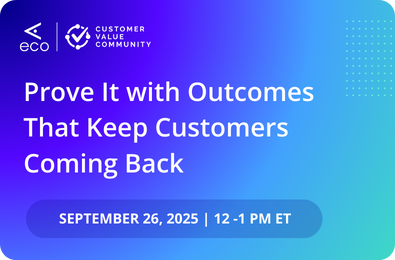
Solutions
PLATFORM OVERVIEW

PLATFORM MODULES
NEW!
ViViEN™ 2.0
AI-Guided GTM Intelligence
Collaborative Value Assessment
Win Customers with Quantified Value
Discovery
Understand Your Customer

Web Value Calculator
Qualify Your Leads
Collaborative Success Plan
Retain & Grow Your Customers
Value-Added Selling
execute on value-based Sales strategies
Eco Web Services
Embed a Value Experience Directly in Your Product or Customer Portal
SOLUTIONS & INTEGRATIONS

Integrations & Partnerships

Value Engineering

Value Consulting

Advisory Services
Why Ecosystems?
Value Calculator
Quantify the Benefits of Scaling Value

Pricing
Get the Most Value

Success Stories
Hear from our Raving Fans

Adoption Guarantee
Our Performance-Backed Guarantee
Community

Customer Value Community
Connect with B2B Professionals

Upcoming Events
Stay up-to-date on best practices

On-Demand Events & Resources
Accessible learning at your fingertips
Resources

Blog
Education on Value Management

Ebooks
Value management Guides

Voice of Value Podcast
Listen to Value Stories

Value Blueprint 3.0
Download the Latest Blueprint







